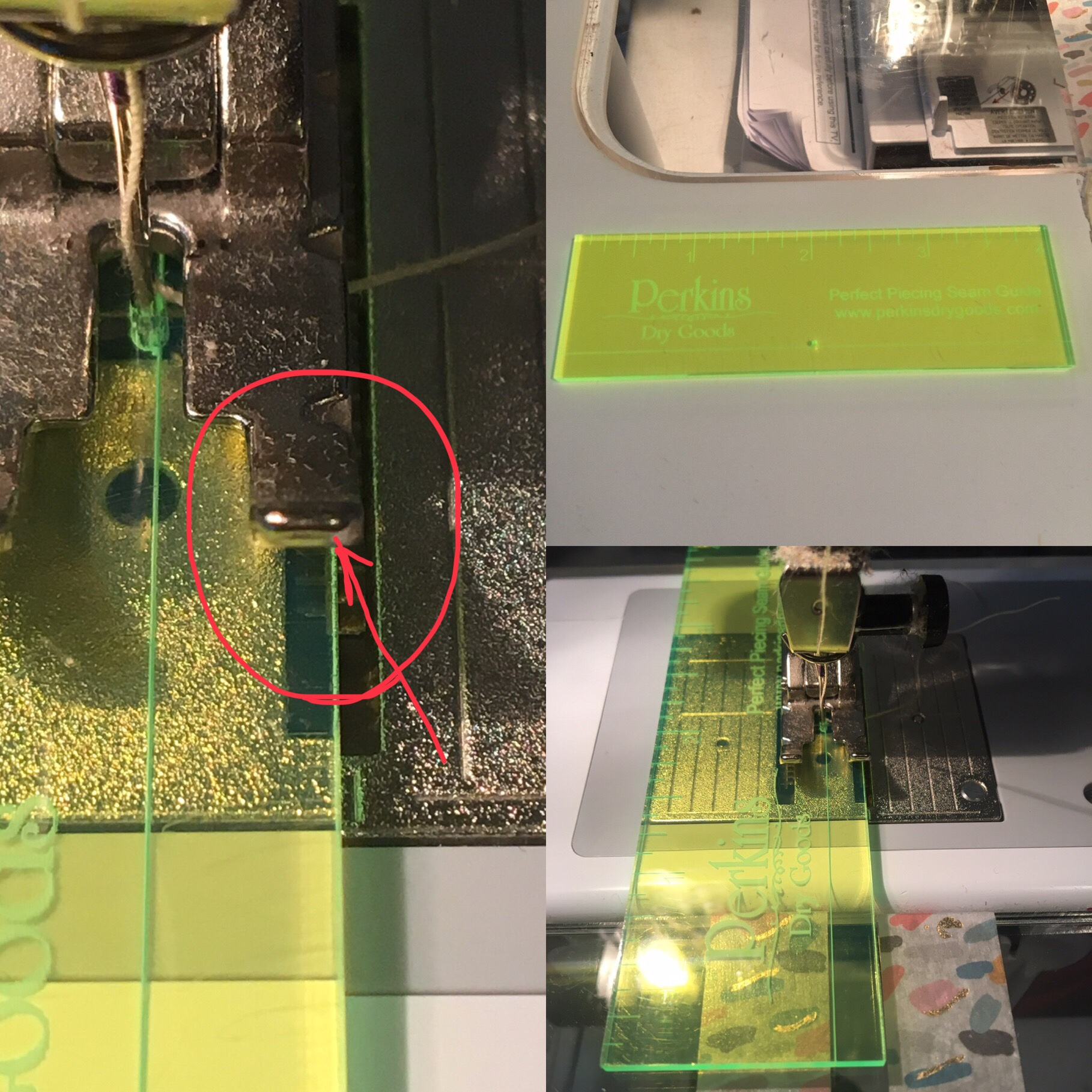
I originally come from a background of sewing garments. In garment work, the standard seam allowance is 5/8″. Most of my life I thought that was a really stupid number, until I realized some of the things it supports: French seams are easier with a 5/8″ allowance. Grading seams are easier with a 5/8″ allowance. Even some bias seams don’t stretch as badly when being manipulated – they do stretch but the stretching doesn’t get much past 1/4″ in from the edge, so at the 5/8″ mark where the seam is, the fabric is behaving well. I learned that last one after sewing a seam, grading it to 3/8″ then realizing it was wrong, and having to gingerly rip it out and resew it. It was horribly tricky to get a smooth seam only at only 3/8″.
When I started quilting, I looked at the 1/4″ seam and thought this was heaven!!! Math is easier with 1/4″ seam. Cutting is easier with 1/4″ seam. Everything all around really should be easier with a 1/4″ seam, until that is you see phrases like “scant 1/4″ seam” or you sew two pieces together and the resulting piece is the wrong size.
Turns out 1/4″ can be even trickier than 5/8″ but in different ways.
First of all, is 1/4″ really 1/4″? All of our sewing machines have a 1/4″ mark, and most of us have a presser foot that is a 1/4″ foot. The trouble with that is that the machine manufacturer has a level of allowable tolerance in where the needle bar is on the machine, and the placement of that needle bar affects how accurate the 1/4″ mark on the sole plate is. The first time I put a ruler under my presser foot and realized that my needle was just a bit off to the left. Probably about 1/32″ off to the left, making my 1/4″ seam about 1/32″ larger.
What’s the big deal with that? 1/32″ is a TRIVIAL measurement! It’s not even marked on any of my rulers!!! Remember, though, that quilting is an additive situation. Let’s say you are making a block that has 16 seams across the width of the block. Something nifty like a trip around the world block of 1″ squares. By being off by 1/32″ over 16 seams, the resulting block is going to be off by 1/2″. [1/32*16=16/32=1/2]. This error compounds itself over the surface of the quilt and you can end up with something that is significantly off sized from what it should be.
Next thing is your pressing and thread. I piece with 50wt cotton thread. It’s not thick but it’s not 40wt either. If I sew a seam and press the seam allowances both to one side, they have to press around and over the thread in the seam. Again, this is a very tiny amount of space, but when it happens over and over, things can get out of whack very fast. Some quilters took this into account by introducing the scant 1/4″ seam. Which is really more like a 6/32″ seam instead of 8/32″ so that when the seam allowance is pressed, it acts like 1/4″ in the finished piece keeping the measurements right. Ok this could work but I have to figure out where that line is on my machine and how to maintain that same seam allowance since I would be money it doesn’t line up with either my 1/4″ mark or my 1/4″ foot.
Enter the Perkins Perfect seam guide, possibly my favorite quilting notion ever. It’s a little piece of plexiglass, with a scant 1/4″ line scored down one side and a little hole right at that line. You put this under your presser foot, drop your needle into the little hole and mark the edge of the seam guide on your machine. Remove the Perkins from under the needle and now when you sew, use that mark to be your scant 1/4″. It’s very reliable. It also lets me use several different machines on the same project and ensure that my seam allowance is the same on all of them. This is spectacular! Since getting my Perkins and using it regularly, I have noticed that my quilting accuracy has improved significantly.
There are some cases where I cannot use a seam guide, such as sewing HSTs. In that case I’ve learned to make them bigger than I actually need, guesstimate my scant 1/4″ seam then trim the pressed HSTs to exactly the size I need (I have a notion for that but that’s for another post on another day).
A quarter inch is such a little thing but it can cause such big headaches to a quilter!


